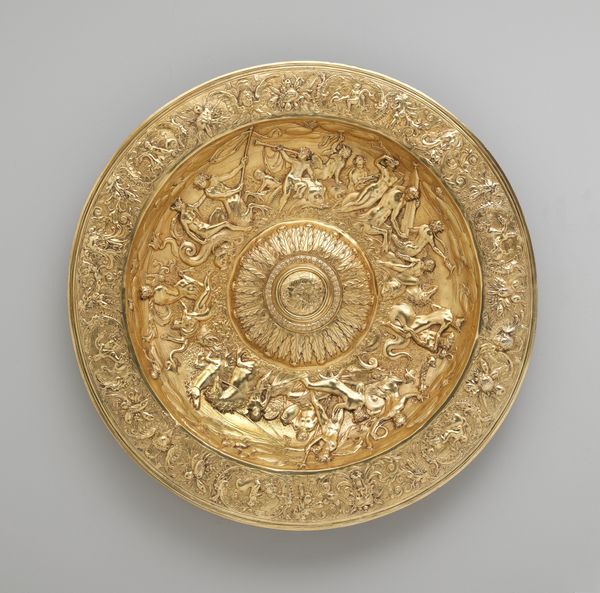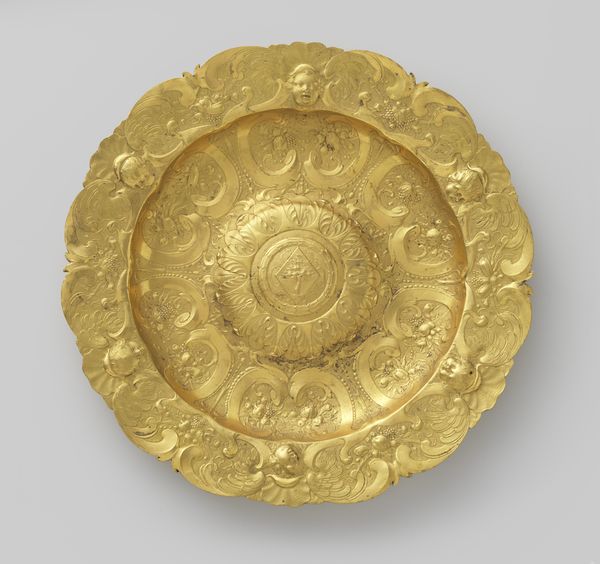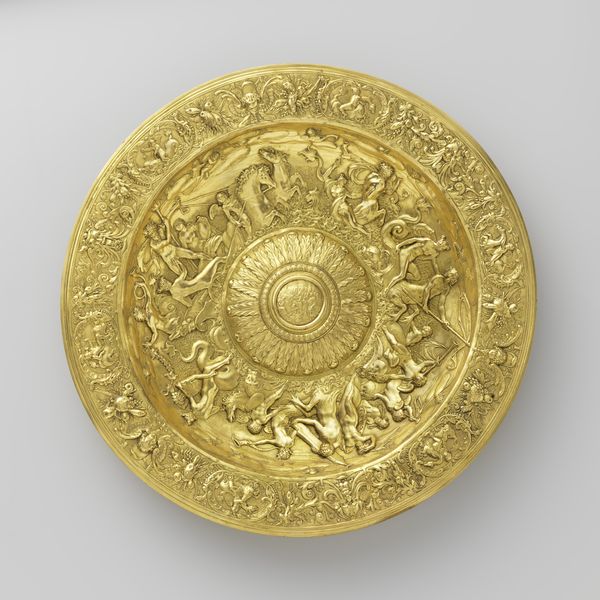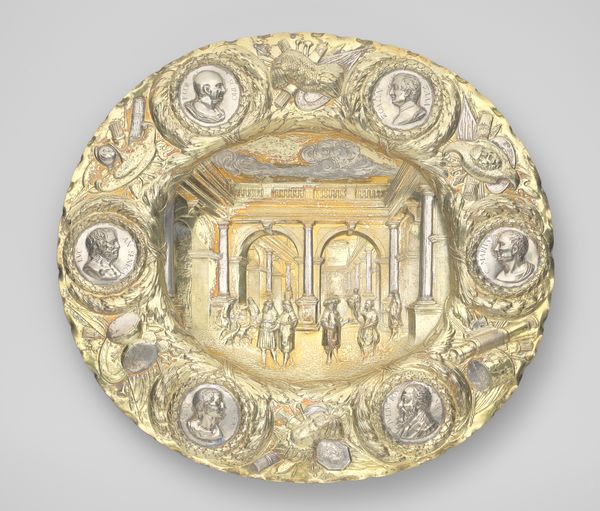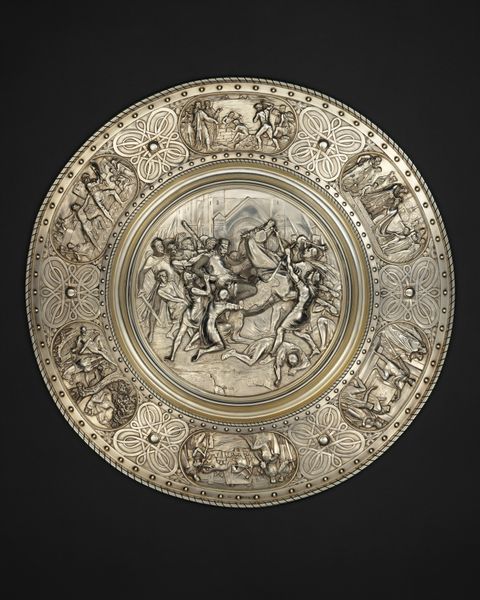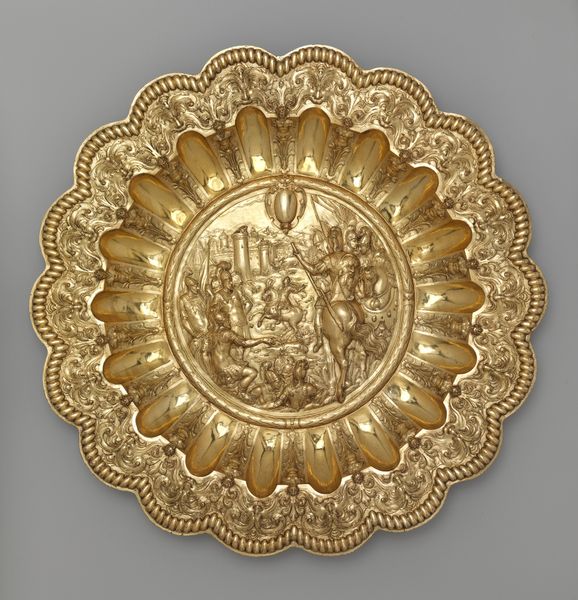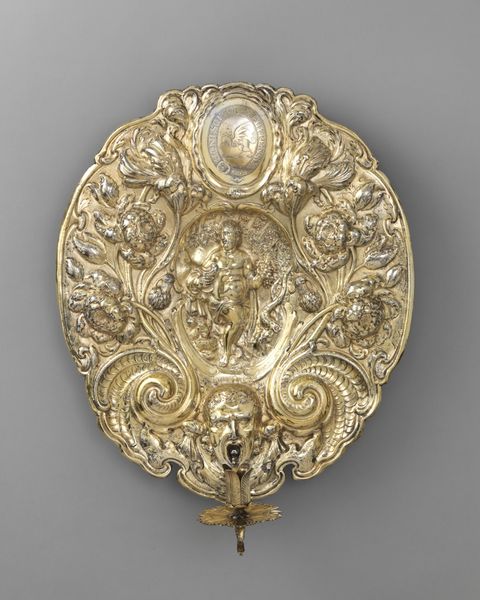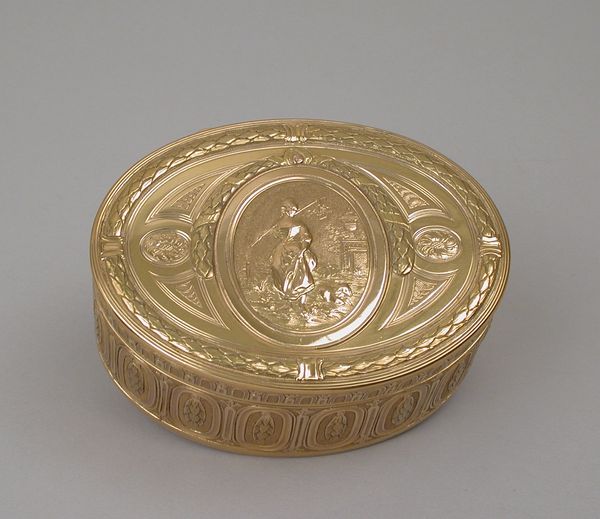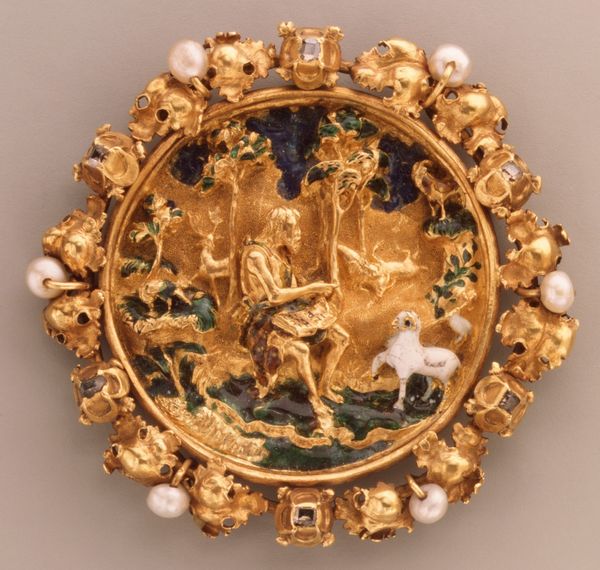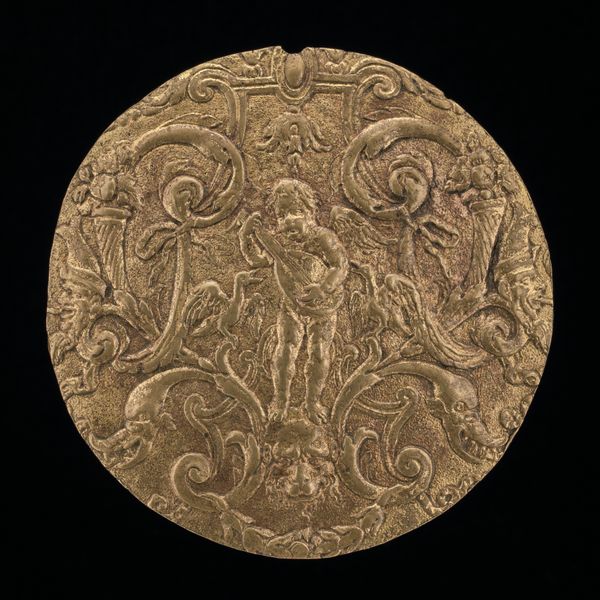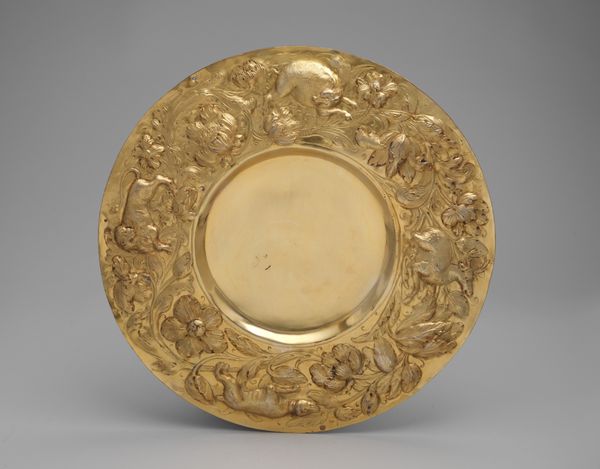
relief, ceramic, sculpture
#
neoclacissism
#
decorative element
#
pottery
#
relief
#
ceramic
#
classical-realism
#
figuration
#
stoneware
#
england
#
sculpture
#
ceramic
#
history-painting
#
decorative-art
Dimensions: 2 1/8 x 24 x 24 in. (5.4 x 60.96 x 60.96 cm)
Copyright: Public Domain
Curator: Okay, let’s have a look at this impressive piece. What strikes you about this gilded charger from 1808, attributed to William Pitts, and titled, “Feast of the Gods”? Editor: Oh, it practically sings opulence! It feels like someone turned a Renaissance painting into a gilded dinner plate. I’m immediately overwhelmed by its theatrical quality and ornate design. All that gold really makes you wonder what kind of table setting it graced. Curator: Indeed! The choice of material, likely stoneware coated in gold leaf, certainly amplifies its sense of grandeur. And considering its period—late Neoclassicism in England—we can recognize the intent to invoke classical ideals, using idealized figures. You know, as icons of harmony, reason, beauty... though with an updated dash of decadence. Editor: Absolutely, a feast for the eyes before a feast for the stomach, literally elevating dining to a symbolic ritual. The very 'feast' itself speaks to a deep well of symbols. Aren't feasts central to almost every culture's origins? The gods always seemed to require grand offerings, so this almost feels like paying homage through an aesthetic gesture. Do you think this plate ever had a function, a meal served on it? Curator: That's the curious thing, isn’t it? To me, it feels far more like a purely decorative statement. Imagine placing steaming food upon that intricate relief! But the Neoclassical movement did strive to unite functionality and beauty. Think of Wedgwood's jasperware pottery... objects aiming to elevate everyday life through classical aesthetics. It's an appealing paradox: accessibility meets refined artistic ambition, but I agree, perhaps not functional. The details of this decorative artwork are indeed so precise! The border itself is filled with a whole chorus line of little figures and faces. Editor: Almost a mini-pantheon observing the central scene. I keep thinking about cultural memory in objects like this; how symbols endure and adapt. These gods—they're not just figures, but carriers of myth, shaping how societies see themselves. Even reduced to a decorative element, that symbolic weight lingers. Seeing them presented this way, I can almost sense their continued resonance, even in the very different world of 19th century England. And that it ended up in Minnesota! It has definitely gone around! Curator: It does carry quite a resonance. Looking at the figures again, there’s something rather lively in the execution, wouldn’t you say? Something that keeps the Neoclassical severity at bay and almost lets it approach a rococo joy. This ‘Feast’ speaks about lasting ideals, adapted and reinterpreted for changing times. Editor: Well said, an echo of divinity for an era moving forward. An elaborate whisper from the past.
Comments
minneapolisinstituteofart almost 2 years ago
⋮
The London firm of Rundell, Bridge & Rundell was the undisputed tastemaker in Regency silver design. The first of eight versions made by Rundells over several years, this charger was probably made to entice orders from their prominent clients, numbering, among others, the Prince of Wales. The central image is ultimately based on a 16th century Venetian bronze relief, representing the apotheosis of Doge Sebastiano Venier, who helped to secure the Holy League's victory in the Battle of Lepanto. In 1719, Bernard de Montfaucon published an engraving of the image in "L'Antiquité Expliquée", titling it "The Wedding of Peleus and Thetis." Rundell, Bridge & Rundell used Montfaucon's engraving as a model, certainly believing it to depict an episode of ancient mythology, as the present title indicates. However, the two figures in Renaissance Ottoman dress in the background have no place in such iconography, pointing back to the Venetian bronze relief as the original source.
Join the conversation
Join millions of artists and users on Artera today and experience the ultimate creative platform.

